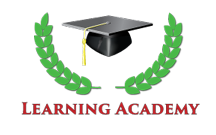
- Description
- Objectives
- Outline
- Materials
- System Requirements
- Watch a Demo
This course introduces students to the study of Microeconomics by focusing on how we make choices in a world of scarce resources. We start by learning about the first analytical model in economics: supply, demand, and equilibrium. Next, we move on to discuss elasticity, choice, and competition, three key concepts in economics. We will discuss the positive and negative impacts of monopolies, and the steps government takes to regulate them. After this, we will learn about inequality in economic distribution, several labor issues, and how risk manifests within an economy. We conclude by learning about financial markets, the public economy, the role of government, and international economics.
Prerequisite(s): None
**Outlines are subject to change, as courses and materials are updated.**
After completing this course, you should be able to:
- Identify how supply, demand, and equilibrium models help us better understand both labor and finance markets
- Differentiate between elasticity, consumption choices, cost structures, and perfect competition
- List the roles that monopolies, anti-trust laws, and environmental protection play in microeconomics
- Recognize economic inequality, labor issues, risk, and insurance as they relate to the distribution of wealth
- Define the public economy, financial markets, trade, trade barriers, and protectionism
Microeconomics Module 1
A World of Scarce Resources
- Economics Defined
- Importance of Studying Economics
- Microeconomics versus Macroeconomics
- Using Theories and Models to Understand Economics
- Overview of Economic Systems
- Individual Choices and Budget Constraints
- Production Possibilities Frontier
- Social Choices
- Objections to the Economic Approach
Microeconomics Module 2
Supply, Demand, Labor, and Markets
- Market Demand, Supply, and Equilibrium
- Shifts in Demand and Supply for Goods and Services
- Four-Step Process for Equilibrium Changes
- Price Ceilings
- Price Floors
- Demand, Supply, and Efficiency
- Labor Market Demand and Supply
- Financial Market Demand and Supply
- Market System as an Efficient Mechanism for Information
Microeconomics Module 3
Elasticity and Consumer Choices
- Price Elasticity of Demand
- Price Elasticity of Supply
- Polar Cases of Elasticity
- Constant Elasticity
- Elasticity and Pricing
- Elasticity in Other Areas
- Impact of Income and Price on Consumption
- Labor-Leisure Choices
- Behavioral Economics
Microeconomics Module 4
Cost, Industry Structure, and Perfect Competition
- Explicit and Implicit Costs
- Accounting Profit versus Economic Profit
- Short Term Structure of Costs
- Long Term Structure of Costs
- Perfect Competition
- Output Decisions in Perfectly Competitive Firms
- Long Term Entry and Exit Decisions
- Efficiency in Perfectly Competitive Markets
Microeconomics Module 5
Monopolies
- Monopolies
- How Monopolies Form
- Barriers to Entry
- Choosing Output in a Profit-Maximizing Monopoly
- Choosing Price in a Profit-Maximizing Monopoly
- Monopolistic Competition
- Oligopoly
Microeconomics Module 6
Antitrust, Environmental Protection, and Negative Externalities
- Monopoly and Antitrust Policy
- Corporate Mergers
- Regulating Anticompetitive Behavior
- Regulating Natural Monopolies
- Great Deregulation Experiment
- Economics of Pollution
- Command-and-Control Regulation
- Market-Oriented Environmental Tools
- Benefits and Costs of Environmental Laws
- International Environmental Issues
- Economic Output versus Environmental Protection
Microeconomics Module 7
Positive Externalities and Economic Inequality
- Positive Externalities
- Under Investment in Innovation
- How Governments Encourage Innovation
- Public Goods
- Theory of Labor Markets
- Wages and Unemployment Unions
- Bilateral Monopoly
- Employment Discrimination
- Immigration
Microeconomics Module 8
Poverty, Economic Inequality, and Risk
- Poverty Trap
- Safety Net
- Income Inequality
- Government Policies to Reduce Income Inequality
- Information
- Risk Insurance
Microeconomics Module 9
Financial Markets and the Public Economy
- Financial Markets
- Raising Financial Capital
- Household Financial Capital
- Accumulating Personal Wealth
- Public Economy
- Voter Participation
- Costs of Elections
- Special Interest Politics
- Flaws in Democratic Government
Microeconomics Module 10
International Trade, Globalization, and Protectionism
- Absolute Advantage
- Comparative Advantage
- Intra-industry Trade between Similar Economies
- Benefits of Reducing International Trade Barriers
- Protectionism
- Effects of International Trade on Jobs, Wages, and Working Conditions
- Arguments for Restricting Imports
- How Trade Policy Is Enacted
- Tradeoffs of Trade Policy
**Outlines are subject to change, as courses and materials are updated.**
**Outlines are subject to change, as courses and materials are updated.**
Ed4Career is committed to being both environmentally conscious and making it easier for you to study! We’re making your education mobile! All of our textbooks are now provided as eTextbooks. You can access them on your laptop, tablet, or mobile device and can study anytime, anywhere.
The move away from physical books to eTextbooks means you get the latest, most up-to-date version available. This also makes your training more accessible, so you can study anywhere you have your phone or tablet. The best part is that all materials are included in your training cost so there are NO extra fees for books!
Internet Connection
- Broadband or High-Speed - DSL, Cable, and Wireless Connections
*Dial-Up internet connections will result in a diminished online experience. Classroom pages may load slowly and viewing large audio and video files may not be possible.
Hardware Requirements
- Processor - 2GHz Processor or Higher
- Memory - 1 GB RAM Minimum Recommended
PC Software Requirements
- Operating Systems - Windows 7 or higher
- Microsoft Office 2013 or higher. Also, you could use a general Word Processing application to save and open Microsoft Office formats (.doc, .docx, .xls, .xlsx, .ppt, .pptx)
- Internet Browsers - Google Chrome is highly recommended
- Cookies MUST be enabled
- Pop-ups MUST be allowed (Pop-up Blocker disabled)
- The Kindle Reader App or VitalSource Bookshelf App are needed for many of our courses (No special equipment needed. This can be downloaded for FREE onto your computer.)
- PowerPoint Viewer (if you do not have PowerPoint)
- Adobe PDF Reader
- QuickTime, Windows Media Player &/or Real Player
MAC Software Requirements
- Operating Systems - Mac OS x 10 or higher with Windows
- Mac office programs or a Word Processing application to save and open Microsoft Office formats (.doc, .docx, .xls, .xlsx, .ppt, .pptx)
- Internet Browsers- Google Chrome is highly recommended
- Cookies MUST be enabled
- Pop-ups MUST be allowed (Pop-up Blocker disabled)
- The Kindle Reader App or VitalSource Bookshelf App are needed for many of our courses (No special equipment needed. This can be downloaded for FREE onto your computer.)
- PowerPoint Viewer (if you do not have PowerPoint)
- Adobe PDF Reader
- Apple QuickTime Media Player


